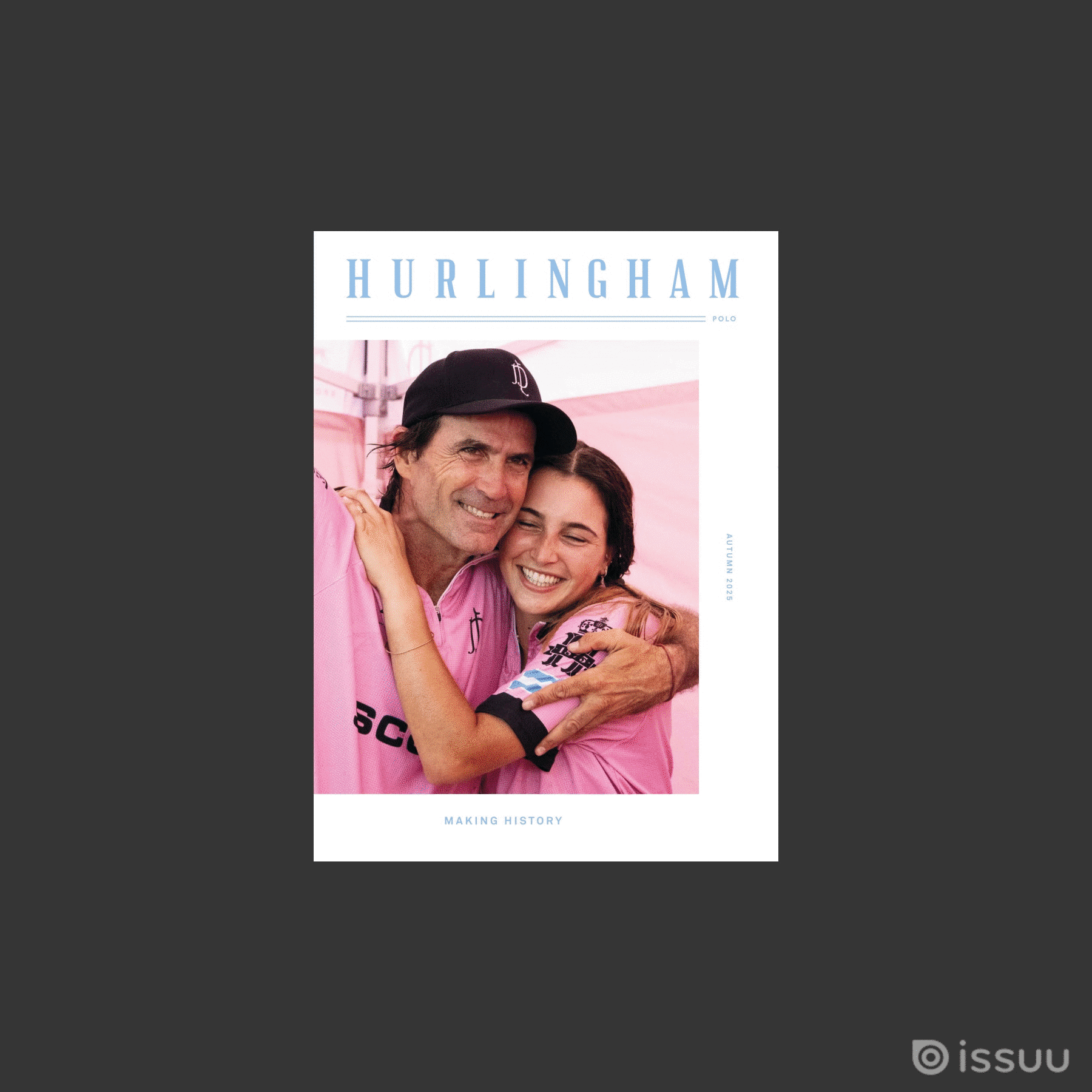A Look insude the Museum of Polo and Hall of Fame
What is most noticeable when entering the Museum of Polo and Hall of Fame is that a passion for the sport of polo has been thoughtfully ingrained into every exhibit. Executive Director George DuPont and Director of Development Brenda Lynn’s enthusiasm for horses, polo and the history of the sport in the U.S. is evident upon meeting the curators.
The Museum of Polo and Hall of Fame started with an idea in the early 1970s. H. Jeremy Chisholm, Philip L. B. Iglehart, Leverett S. Miller and George C. Sherman Jr., all polo players, dreamed of creating a place that could preserve the history of the sport. In 1984, the museum obtained their 501(c)(3) as a non-profit and in 1986 held their first fundraiser. Finally, in 1988, the first exhibit was created by Palm Beach Design to be featured at the Kentucky Horse Park in Lexington, Kentucky. In 1997, the museum found its permanent home in Lake Worth, Florida, where it continues to grow today. It is the only museum and hall of fame for the sport of polo in existence and has recently added a new wing which will provide more room to host exhibits and events.

George and Brenda immensely love what they do. Brenda got her start in the horse world where she bred and raised Arabians. A passion for marketing and non-profits, combined with her love for horses led her to the museum. George got his start at the museum when it first opened. He had been immersed in polo, having worked with many polo people and horses, and had the background that was needed to help create the first exhibit that was featured at the Kentucky Horse Park for four years.

When asked what his favorite exhibit has been in the museum, George admits, “The U.S. Open. I have been doing it for thirty years,” referring to how long he has been a part of the tournament. He cleans and polishes the magnificent trophy each year prior to the start of the USPA’s most prestigious event, taking over four hours to make sure it looks absolutely perfect. He is particularly knowledgeable about the U.S. Open Polo Championship®. He can remember many facts about the Open from years past. George has attended the event every year since working at the museum and remarked, “In thirty years, I have seen 240 players, 1,920 horses come play in the tournament, and it is still new and exciting each year.”

Brenda’s passion for the horses in the sport is undeniable. When asked about her favorite exhibit, she said, “For me, it’s all about the horses.” She played a huge role in the creation of one of the most popular collections at the museum: “Horses to Remember.” Brenda recalled that she had been working on historical information in the museum for a while, but noticed that there was not a lot of accessible information on the horse’s role in the sport. She set out to change that and started plowing through the library. Brenda noted that in her research, she found that from the 1910s to the 1930s people wrote more about polo ponies when covering polo matches in their news stories. “It all started with Gay Boy,” Brenda said, referring to a horse played by Hall of Fame greats Tommy Hitchcock, Robert Strawbridge Jr. and Malcolm Stevenson. According to the Polo Museum and Hall of Fame:
Considered the greatest polo mount of his day, Gay Boy was an incredible athlete with remarkable speed who played in the 1924 International series and was most remembered for his sensational play in 5 chukkers of the 1927 International matches – 2 in the first match and 3 in the second by polo Hall of Famer Malcolm Stevenson who considered this horse ‘supreme among ponies.’ His play was crucial in that last match and his courage and dependability were a deciding factor in the US victory … Gay Boy’s curious and tragic death, crushed by a falling airplane as he stood in his stall at Meadow Brook in 1928, removed a great figure from the game.

Brenda explained that she found old news publications that featured stories on Gay Boy’s death. She said that it was not just national, but international news. There was no mention in the stories of the people who perished in the crash, only of Gay Boy. This revelation made Brenda realize that polo history, specific to our equine partners, needed to be documented. She started working on the “Horses to Remember” exhibit with a mission to tell the horses’ story. “Without that research, the accomplishments of these amazing horses back in the day would be lost,” she said. Adding, “People can speak for themselves, horses can’t.” The collection has grown each year since its start in 2000, with new horses installed each February. A beautiful painting of each inducted horse by artist Melinda Brewer hangs on the walls of the museum, paying tribute to each notable equine.
The museum team of two work hard each day to find new and exciting polo artifacts to showcase in the museum. One of their newest acquisitions is the Foundation Challenge Trophy from Santa Barbara Polo Club, created and sponsored by Tiffany & Co. to celebrate SBPC’s centennial in 2011. The highlight of the celebration was a royal visit by the Duke and Duchess of Cambridge (better known as Prince William and Kate) and a charity polo match called “The Foundation Polo Challenge.” The match benefited the American Friends of the Foundation of Prince William and Prince Harry and Polo Training Center Santa Barbara. Another recent addition to the museum’s impressive collection is the “Lady Polo Player” bronze by Gerald Anthony Shippen, donated in Honor of S.K. Johnston Jr. The bronze was modeled after high-goal Gillian Johnston. Currently under production are new interactive video exhibits to be displayed at the museum where historical footage from polo tournaments such as the C.V. Whitney and USPA Gold Cup® can be watched by museum visitors.

Some of the current exhibits in the museum include a Tommy Hitchcock tribute, a women in polo display, a polo family exhibit, Intercollegiate/Interscholastic polo artifacts and pictures, along with many interactive tournament exhibits. George and Brenda are fond of the Tommy Hitchcock Exhibit. The museum has many photos of Tommy, as well as the actual wooden horse that he used to practice his swing on. George knows many interesting facts about Hitchcock and can tell museum goers all about the famous player, stating that, “Tommy was the inspiration for ‘The Great Gatsby’ by F. Scott Fitzgerald, he was that well known of a player back in the day!” Another exciting artifact in the Hitchcock exhibit is a blanket worn by Tommy’s famous paint horse Tobiano. When asked about the blanket, Brenda said, “I get goosebumps every time I touch it! There is still DNA from Tobiano on the blanket!” It is clear to anyone who has had an opportunity to tour the museum, Brenda and George are very passionate and truly are a great source for polo history.

The museum also curates the “Polo Hall of Fame” that honors exceptional players in the sport each year. The Hall of Fame inducts polo icons from the past and present that exemplify the best of polo. The most recent inductees into the Hall of Fame are living legend Hector Galindo, 1930s polo icon Billy Post, and Iglehart Award winners Richard C. Riemenschneider and Russ Sheldon. The museum inducts honorees during The Hall of Fame Induction Awards Dinner Gala that takes place every year in February on the Friday of Presidents Day weekend. This gala is the largest fundraising event for the museum and is always attended by many well-known people in the polo community.
Although the museum has a permanent location in Lake Worth, Florida, Brenda and George go on the road in the summer months to educate people, spread awareness about the history of the sport of polo and to raise funds for the museum. The museum has a great connection and relationship with polo clubs throughout the country, and regularly features exhibits and trophies that represent the unique qualities of each polo club. Traveling with the polo crowd to locations such as Newport, Greenwich, Santa Barbara, Aspen and Saratoga, just to name a few.

The Museum of Polo and Hall of Fame has many goals to accomplish in the future that include continuing to raise money to help update and refurbish the building. Having been built in 1997, there are areas of the building that need work. Although the USPA offices are attached to the Polo Museum and Hall of Fame, the USPA does not fund the museum. They are independently operated and rely on donations to preserve the history of polo for generations to come. The museum offers free admission and encourages donations from visitors.
With the help of a great Board of Directors, George and Brenda have done a remarkable job running the Museum of Polo and Hall of Fame for almost two decades. Their fervor for the sport is wonderful to experience. If you are in South Florida, it is absolutely essential to visit this oasis of polo history. Brenda and George can tell you all about the amazing horses and people throughout the years. Surrounded by knowledgeable and hospitable polo historians, it is easy to spend the entire day learning about polo.
Please visit www.polomuseum.com for more information or to donate today.


